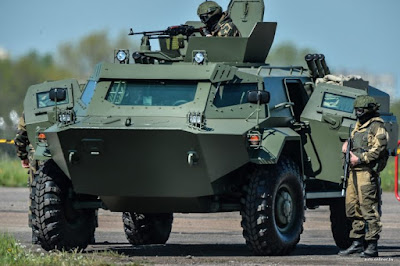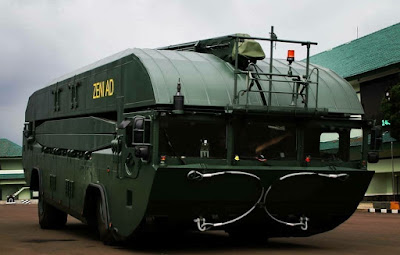PT Len dipercaya untuk melakukan modernisasi terhadap CMS KRI menggunakan CMS Nasional hasil karya dalam negeri. Hingga saat ini CMS Nasional tersebut telah tergelar di 8 KRI serta disertifikasi oleh TNI AL dan Kementerian Pertahanan RI (all photos : LEN)
Combat Management System (CMS) merupakan komponen utama Combat System suatu kapal perang. CMS mengintegrasikan sistem sensor dan sistem persenjataan sehingga dapat mempermudah operator CMS dalam mendeteksi, melokalisasi, mengklasifikasi, tracking, hingga penembakan sasaran secara terintegrasi. CMS mampu memberikan kemudahan, kecepatan dan keakuratan dalam memahami situasi taktikal pertempuran serta menyediakan sarana untuk menentukan suatu keputusan dan melakukan tindakan taktis.
Sejak tahun 2010, inovasi produk CMS Nasional telah dirintis oleh PT Len Industri (Persero). PT Len dipercaya untuk melakukan modernisasi terhadap CMS KRI menggunakan CMS Nasional hasil karya dalam negeri. Hingga saat ini CMS Nasional tersebut telah tergelar di 8 KRI serta disertifikasi oleh TNI AL dan Kementerian Pertahanan RI.
Ruang Lingkup
Secara garis besar, kegiatan modernisasi CMS yang sudah berjalan di 8 KRI meliputi Penggantian/modernisasi CMS bawaan KRI menjadi CMS Nasional, yang terdiri dari:
a. Konsol Multifungsi (KMF) untuk operator di Ruang PIT (Pusat Informasi Tempur).
b. Terminal Integrasi Sistem (TIS) sebagai antarmuka integrasi CMS dengan sistem sensor dan persenjataan pada kapal.
c. Peralatan Tambahan/Pelengkap:
- Konsol Radar Navigasi di Ruang PIT.
- Meja Plot Otomatis.
- Large Screen Display
- Maintenance Station (Desktop dan Portable).
d. Kegiatan pendukung, seperti
- Pembongkaran peralatan existing.
- Pelatihan.
- Instalasi dan Integrasi.
e. Uji Coba (Harbour Acceptance Test dan Sea Acceptance Test).
f. Own-ship Data (OSD) Management
Melakukan integrasi, pengolahan serta validasi Own- ship data dari berbagai sensor navigasi seperti Gyro Compass, GPS, Speed Log, Anemometer, dll. sehingga dapat digunakan sebagai acuan untuk menentukan informasi posisi, kinematik serta environment kapal.
Fungsi OSD Management bertujuan untuk:
-Mengatur konsistensi OSD sebagai acuan yang digunakan di seluruh komponen CMS;
-Menyediakan tampilan OSD untuk operator CMS;
-Melakukan rekonsiliasi data untuk data yang berasal dari beberapa sensor;
-Menyediakan fasilitas manual entry/simulasi.
g. Track Management
Melakukan integrasi dengan berbagai sensor deteksi seperti Radar, IFF, ESM, Sonar, dll untuk memperoleh informasiinformasi sasaran (track) yang terdeteksi. Secara umum fungsi ini bertujuan untuk:
-Mengatur konsistensi track yang digunakan di seluruh komponen CMS dengan melakukan automatic track numbering;
-Melakukan join, correlate dan associate untuk informasi track yang berasal dari beberapa sensor secara otomatis berdasarkan kriteria yang dapat diatur oleh operator CMS;
-Menyediakan fasilitas pembuatan manual track;
-Menyediakan fasilitas bagi operator CMS untuk menambahkan informasi suatu track untuk memudahkan proses identifikasi dan klasifikasi.
Memberikan visualisasi menyeluruh terhadap situasi taktis pertempuran berdasarkan hasil informasi yang diolah dalam fungsi OSD Management dan Track Management. Adapun informasi-informasi yang disajikan secara visual antara lain:
-Posisi dan kinematik Own-Ship dan Tracks (beserta informasi jenis dan identitasnya);
-Peta Navigasi Elektronik;
-Radar Overlay;
-Graphics Object (seperti grid, range rings, tactical figure, dll).
h. Tactical Functions
Melakukan berbagai kalkulasi taktikal untuk memudahkan operator CMS dalam melakukan
operasional taktis peperangan maupun navigasi. Hasil informasi dari kalkulasi tersebut dapat berupa saran, alarm atau visualisasi dalam CMS. Fungsi-fungsi taktis yang disediakan oleh CMS Nasional antara lain:
General Navigation: merupakan fungsi standar Navigasi umum seperti Closest Point of Approach (CPA), Collision Avoidance, Route Handling, Parallel Index, Man Over Board (MOB) Recovery
Tactical Navigation: merupakan fungsi navigasi dan taktis spesifik terkait operasional kapal perang antara lain:
-Navigasi formasi perang (Stationing,Open/Close at Given Bearing, Open/Close to Given Distance, Transit at Given Distance);
-Taktis operasi perang anti kapal selam (Furthest on Circle, Plan Cordon, Sector Screen, Zig Zag Planning);
-Koordinasi dengan unsur udara (Aircraft Direction, Helicopter Recovery, dan VECTAC).
i. Warfare Functions
Menyediakan sarana bagi operator untuk melumpuhkan suatu sasaran melalui sistem persenjataan yang dimiliki Kapal, antara lain meliputi:
-Threat evaluation, yaitu fungsi CMS yang melakukan kalkulasi prediksi ancaman yang dapat ditimbulkan oleh suatu track sehingga CMS dapat diberikan saran prioritas track yang harus dilumpuhkan terlebih dahulu;
-Fasilitas untuk mengendalikan dan melakukan penembakan meriam dari konsol operator CMS sehingga tidak diperlukan konsol tambahan yang dedicated untuk melakukan penembakan meriam;
-Kalkulasi prediksi sudut cegat penembakan berdasarkan data kinematik kapal, sasaran, environment, model balistik meriam serta jenis amunisi yang digunakan termasuk melakukan stabilisasi secara software terhadap meriam sehingga akurasi penembakan lebih akurat.
Sedikit tambahan mengenai CMS (Combat Management System)
Indonesia merupakan negara kepulauan terluas di dunia, memiliki 18.307 pulau, perairan seluas 93.000, serta garis pantai sepanjang 54.716 Km. Kondisi geografis tersebut mengharuskan Indonesia memiliki pertahanan maritim yang kuat. Salah satu parameter yang menentukan kekuatan pertahanan maritim tersebut adalah kemampuan tempur KRI yang dimiliki oleh TNI AL. KRI harus mampu melakukan pendeteksian serta memberikan reaksi terhadap ancaman secara efektif dan efisien.
Keberhasilan pendeteksian serta reaksi terhadap ancaman sangat dipengaruhi oleh teknologi serta kemampuan dari sistem sensor dan persenjataan yang dimiliki oleh KRI sedangkan efektifitas dan efisiensinya sangat ditentukan oleh sistem yang mengintegrasikan sensor dan senjata tersebut. Sistem tersebut harus mampu memenuhi kebutuhan operasional pertempuran seperti :
• Melakukan pengolahan data yang berasal dari berbagai sensor menjadi informasi terkait navigasi,
potensi ancaman serta reaksi yang dapat dilakukan untuk melumpuhkan ancaman tersebut.
• Memberikan visualisasi menyeluruh terhadap situasi taktis pertempuran.
• Menyediakan sarana untuk melakukan reaksi secara efektif dan efisien melalui sistem persenjataan yang dimiliki.
• Menyediakan sarana untuk melakukan koordinasi dengan unit lain dalam suatu gugus tempur, seperti melakukan pertukaran data sasaran, perintah, dll.




















































